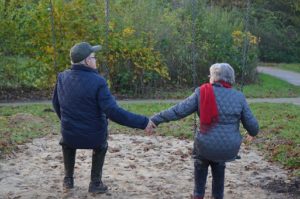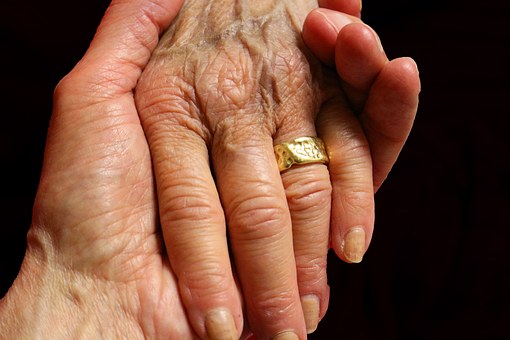Physical Intimacy and the Dying

Join SevenPonds each month as Tani Bahti, RN, CT, CHPN, offers practical on-hand guidance to demystify the dying process. As an RN since 1976, Tani has been working to empower families and healthcare professionals to have the best end-of-life experience possible both through education and the development of helpful tools and resources. As the current Director of Pathways, Tani is also the author of “Dying to Know, Straight Talk About Death and Dying,” considered by SevenPonds to be one of the most practical books on the topic. Founder Suzette Sherman says this is, “the book I will have at the bedside of my dying parents some day, hopefully a very long time from now.”
I observed the loving and longing in Dan’s eyes as he looked towards Jean. Although married for 46 years, their eyes still sparkled when they gazed at each other. He’d kiss her hand and stroke her forehead, and she’d close her eyes and smile.
I had asked him about their lives together during many hospice visits, but this particular visit he hesitated, looked down and whispered quietly, “I miss our physical contact. We were ‘very active,’ you might say, and always slept spooning each other.” His voice trailed off, and he looked away with some embarrassment.
I painfully recognized my failure to address the couple’s intimacy needs. That need was so low on my own list of ‘priorities’ of assuring comfort and preventing bedsores and constipation that I did not ask how they defined quality of life and how sexuality ranked in terms of importance.

Although our bodies may fail us, our spirit often remains vibrant. Our need for the healing value of touch remains high. Too often, once a person requires oxygen, medications for pain or is placed in a single hospital bed, he or she becomes “the patient” needing care, and secondarily a spouse or partner. Many people feel that it is taboo, selfish and even perverted to consider their dying partners in a sexual way.
It’s also true that the symptoms of many diseases; the side effects of many medications; decreasing energy; the changes in both body image and control; and lack of sexual desire can make this a moot issue for many couples. But for those with a mutual interest, we must address the barriers and normalize basic human desires.

Sexuality may be expressed with a tender touch, kissing or simply embracing and spooning. Gently massaging the back, shoulders, hands or feet is a form of loving human contact that promotes comfort and connection. Sexual intimacy may still be possible with the use of positioning pillows for comfort; making sure tubes aren’t trapped in awkward places; and making sure that pain or nausea are under control and not interfering with the pleasure of touch.
It’s ok to ask.
We do not lose our humanness and need for connection when we are dying.
We may have to make adjustments, forego some aspects or find creative yet loving ways to maintain the connection in a way that affirms the loving relationship that was present before the illness.
Human touch, however lovingly delivered, is a potent elixir.
Take a look at a copy of Tani’s book “Dying to Know — Straight talk about Death and Dying” to help demystify the process and offer words of wisdom on the many aspects of dying.


